News from the 90th EAS Congress, Milan Italy: Monday 23rd May, 2022
The latest developments in personalised approaches to atherosclerotic cardiovascular disease (ASCVD) prevention were the focus of Plenary 1. Dr Chiara Giannarelli (Icahn School of Medicine at Mount Sinai, and Cardiovascular Research Center at NYU Langone NYU Grossman School of Medicine, New York, USA) discussed the potential of deep phenotyping in the development of novel personalised therapies for ASCVD prevention. Although atherosclerosis is well recognised as a chronic inflammatory disease, the key factors that drive plaque progression towards disruption and clinical cardiovascular events remains unclear. For example, while CANTOS1 showed that targeting inflammation can reduce secondary cardiovascular events, the inflammatory pathways involved at different stages of the disease are likely to differ. Moreover, plaque characteristics are also influenced by diverse factors including diet/lifestyle, genetics, epigenetics, as well as the underlying risk factors.2
Deep phenotyping offers the potential to understand the complexity of the immune composition of human atherosclerotic plaques. In studies using transcriptomic and proteomic approaches, Dr Giannarelli showed that while T cells dominate human atherosclerotic plaques, there is substantial heterogeneity depending on the type of cardiovascular complication. Specifically, Dr Giannarelli showed that there is a distinctive transcriptional signature of CD4+ T cells that are activated in stroke patients. Mechanistic insights into different ASCVD manifestations, together with ‘omics’ technologies to investigate plaque characteristics, can help in computational approaches to identify new uses for existing compounds in targeting inflammation to prevent ASCVD events.
Dr Eicke Latz (Institute of Innate Immunity, University of Bonn, Germany) discussed the vascular response to atherosclerosis, based on the use of systems approaches that elucidate how lifestyle-associated factors trigger and maintain chronic inflammation and disease development. Inflammasomes play a critical role in both transcriptional and post-translational regulation of inflammation.3 However, priming of the inflammasome is necessary before activation in macrophages, and this may be mediated by a range of molecular entities. Using a murine model, Dr Latz showed that systemic inflammation induced by a Western diet is transient, suggesting that this exposure may modulate the cellular responsiveness to innate stimuli. In subsequent studies he showed that the Western diet altered innate immune responses, such as Toll-like receptor (TLR) responses in bone marrow cells. The NLRP3 inflammasome has a crucial role in both the systemic response to Western diet exposure and in mediation of reprogramming. Machine learning approaches have enabled identification of metabolic factors such as S14 sphingomyelins that influence priming of the inflammasome and activation of inflammation and atherogenesis in vivo.
Despite best evidence-based treatment, high-risk patients continue to experience cardiovascular events. Single plasma risk markers have failed to robustly improve ASCVD risk scores. Biomarkers that represent different pathways of atherosclerosis, together with imaging, can help in refining risk stratification so that treatments are targeted to patients likely to benefit most. According to Professor Wolfgang Koenig (German Heart Center Munich, Technical University of Munich, Germany) evidence supports the use of novel multimodal imaging modalities to identify vulnerable plaque and for use in clinical trials to evaluate potential effects of pharmacotherapy on clinical endpoints. Biomarkers also have a role, as for example in novel applications for cardiac troponins in stratifying risk and guiding therapy. Biomarkers of vascular inflammation have been shown to enhance risk discrimination for cardiovascular events in the secondary prevention setting.4,5 Attention has focused on whether targeted proteomics, combined with advanced machine learning, can improve personalisation of risk stratification and targeting of therapy. Recent studies show that a proteome-based model outperforms clinical risk factors in predicting cardiovascular risk in the primary prevention setting.6 Additionally, in secondary prevention cohorts, targeted plasma proteomics comprising proteins related to ASCVD, metabolism, and inflammation, together with machine learning techniques, was superior to a clinical risk model in predicting recurrent ASCVD events.7 Future updates to SCORE will undoubtedly incorporate ‘big data’ approaches to improve risk stratification.
Finally, Dr Amit V. Khera (Massachusetts General Hospital, Broad Institute of MIT and Harvard, and Harvard Medical School) focused on the potential of genetic risk scores, a quantitative metric of inherited risk, for the delivery of precision ASCVD prevention. Polygenic risk scores offer the advantage of risk stratification from early in life before the onset of traditional risk factors, and thus the opportunity to intervene early with lifestyle and therapy to significantly reduce cardiovascular risk.8 High polygenic risk may also modify penetrance of monogenic variants. In concluding remarks, Dr Khera commented that polygenic risk scores may offer potential for improving the efficiency of clinical development of novel therapies. However, a number of issues need to be resolved before these can be integrated into development, including standardisation, validation, and overcoming unequal performance across different ethnicities. Regulatory guidance is also needed on the use of polygenic scores.
Personalised approaches to ASCVD prevention are already in progress nod remain an ongoing quest for the future.
References
- Ridker PM, Everett BM, Thuren T, et al. N Engl J Med 2017;377:1119-1131.
- Pasterkamp G, den Ruijter, Giannarelli. Arterioscler Thromb Vasc Biol 2022 ;42:e86-e95.
- Latz E. Nat Rev Immunol 2021;21:622-623.
- Ford I, Shah AS, Zhang R, et al. J Am Coll Cardiol 2016;68:2719-2728.
- Antonopoulos AS, Angelopoulos A, Papanikolaou P, et al. JACC Cardiovasc Imaging 2022;15:460-471.
- Hoogeveen RM, Pereira JPB, Nurmohamed NS, et al. Eur Heart J 2020;41:3998-4007.
- Nurmohamed NS, Belo Pereira JP, Hoogeveen RM, et al. Eur Heart J 2022;43:1569-1577.
- Khera AV, Kathiresan S. Circulation 2017;135:1005-1007.

